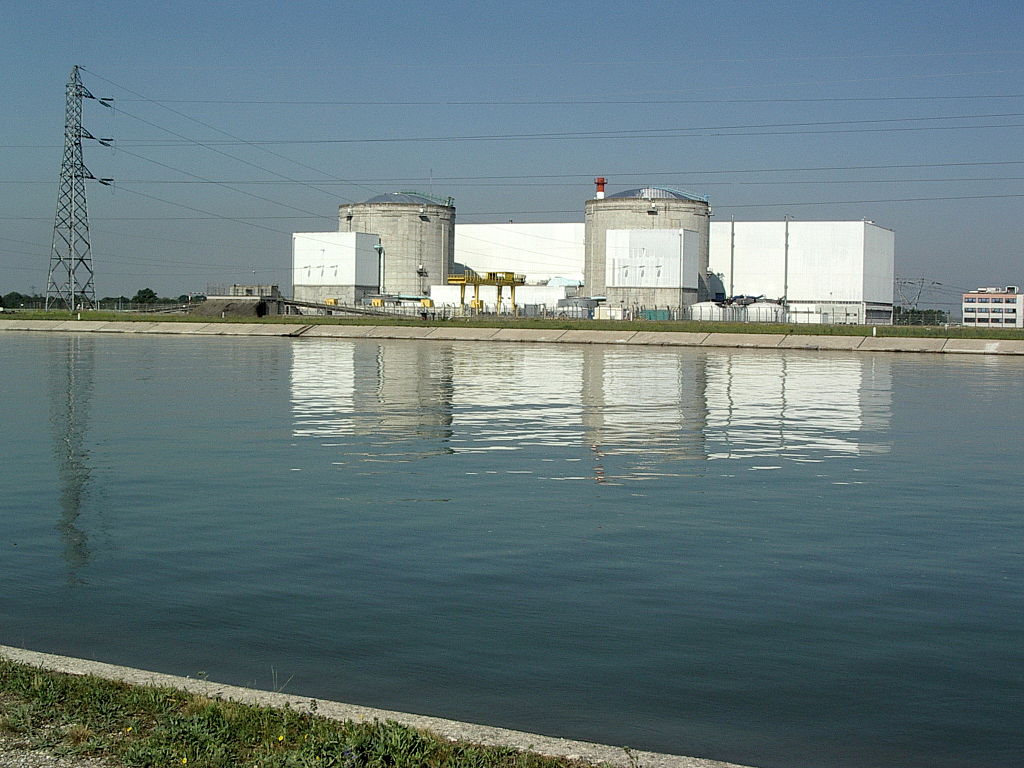The European Commission has given the green light to a tender mechanism the French government has conceived to enable the construction of solar plants with 300 MW of capacity at the Fessenheim nuclear power plant – the country’s oldest.
The commission said the project selected through the tender will receive a premium tariff under a 20-year contract, and the tender’s budget is approximately €250 million.
“The aid will be granted by the French state and will contribute to the French and European objectives of energy efficiency and energy production from renewable sources, in line with the EU’s environmental objectives, with possible distortions of competition state support being reduced to a minimum,” the commission stated.
The tender was announced by the French government in April. In July, France’s Directorate General for Energy and Climate – part of the Ministry for the Ecological and Inclusive Transition – revealed details of the tendering scheme. According to that announcement, 200 MW of the tendered capacity will be for ground-mounted PV ranging in size from 500 kW up to 30 MW, with the remaining 100 MW accounted for by rooftop projects larger than 8 MW in scale.
Potential tariffs estimated
The tender was to be implemented in three phases, starting late last year and continuing in the middle and latter stages of this year, and was set to comprise three groups of installations: the ground-mounted PV; rooftop systems on buildings, greenhouses, carports or agricultural buildings with an output of 500 kW to 8 MW; and rooftops with a capacity of 100-500 kW.
Projects selected among the first two categories will be entitled to a premium feed-in tariff while installations of the third and smallest category will have access to a regular FIT. The tariff for ground-mounted PV is expected to be €50-70/MWh, and that for larger rooftops €70-100/MWh. Smaller rooftop projects are expected to be granted €80-110/MWh.
The 40-year-old Fessenheim nuclear site, in the Haut-Rhin department of Alsace in northeastern France, is set to be decommissioned by next year. The plant has seen more than one temporary shutdown due to safety issues. One of the most high-profile issues occurred in April 2014, when Reactor 1 was shuttered. The French Nuclear Safety Authority reported at the time that internal flooding in the non-nuclear part of the reactor had damaged safety electrical systems. After being repaired, the reactor was reconnected to the grid in May the same year.
This content is protected by copyright and may not be reused. If you want to cooperate with us and would like to reuse some of our content, please contact: editors@pv-magazine.com.




“300MW” of solar “capacity” means less than 8MW of delivered energy average. “Capacity” is how wind/solar folks lie about installations, then get subsidies from those not understanding the difference between Capacity and Capacity Factor (delivered energy fraction).
But, billionaire receivers of subsidies indeed do get it…
Warren Buffet publicly stated (2014). “…on wind energy, we get a tax credit if we build a lot of wind farms. That’s the only reason to build them. They don’t make sense without the tax credit.”
http://tinyurl.com/meule2r
Solar PV is even less efficient, wasting ~80% of all the solar energy falling on it. As a PV stockholder, perhaps I should hide that. But, I’m not subsidized. ;]
Less than *8* megawatts? Less than 40, for sure, but not less than 8,
The headline is a lie not intended to deceive, rather, as a show of power. But perhaps it *will* deceive people who haven’t been paying attention, and that’s a lot of us. Wikipedia says Fessenheim, under threat of closure 15 months from now, has capacity 1840 megawatts. In France, reactors often throttle down, so its year-round average megawattage must be close to 1300 megawatts.
The 1260 or more megawatts that the PV cells will not replace will be replaced by fossil fuels, on which EU governments make money.